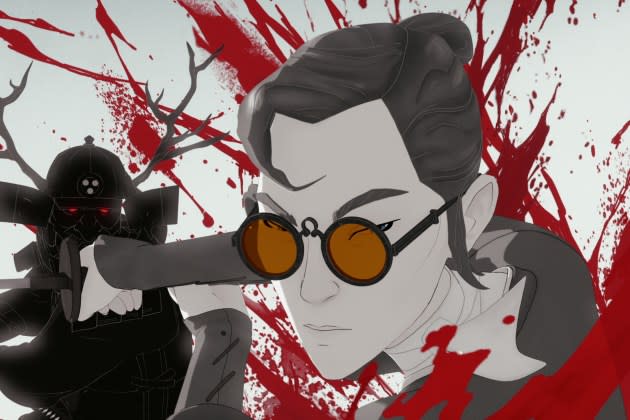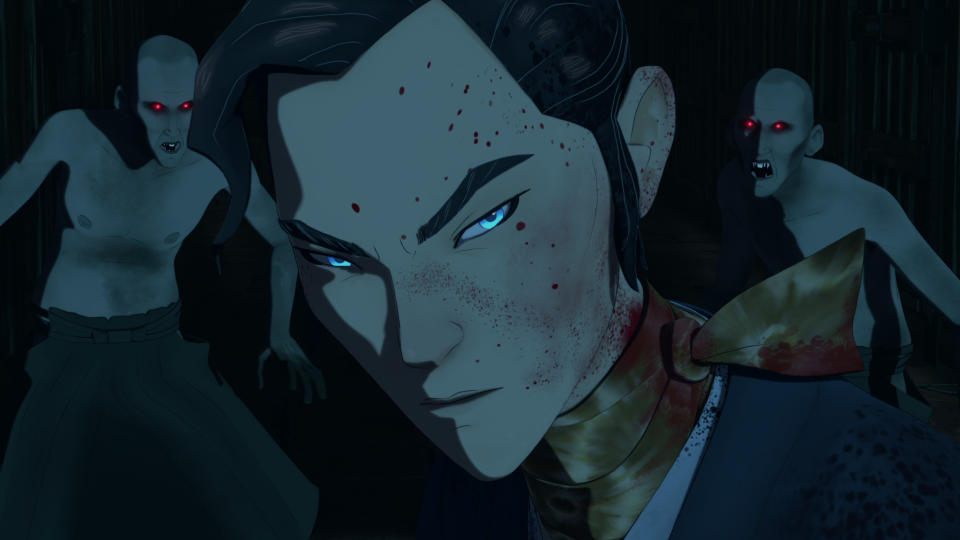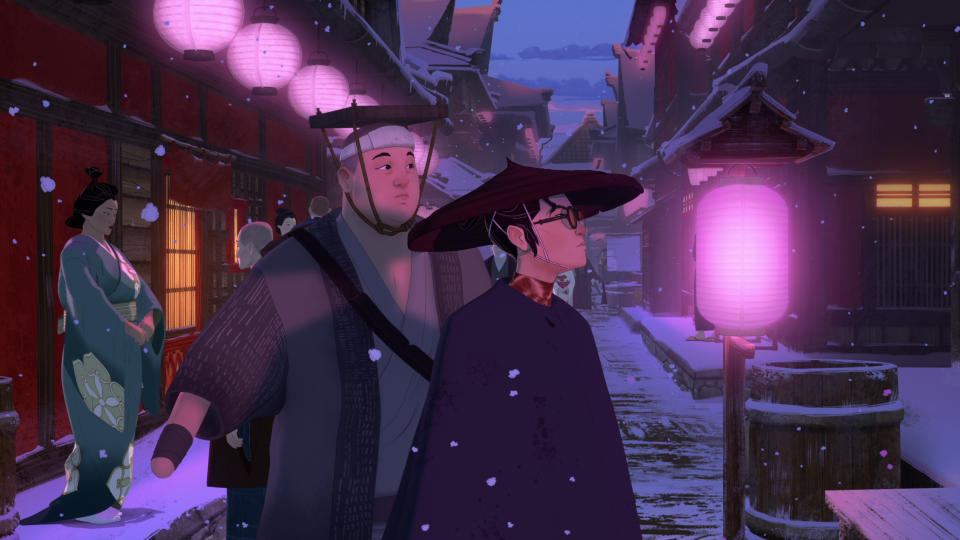‘Blue Eye Samurai’ Creators Amber Noizumi & Michael Green On Working With Netflix Bring The Animated Series To Life

After ruminating on the idea for Blue Eye Samurai for quite a while, Amber Noizumi and Michael Green had difficulty finding the right medium – until they decided the story needed to be animated in whole new style. Enter Netflix, which had just recently started an adult animation division, and the eight-episode series was born.
Blue Eye Samurai follows Mizu (Maya Erskine), a young warrior driven by revenge as she lives as an outcast in Edo-period Japan. Her blue eyes signify her as an outsider in a Japan that has closed its borders, and her gender prevents her from legally seeking revenge. Green and Noizumi say they wanted to build up as many obstacles as they could for Mizu to overcome, as a warrior seeking to “transcend her station.”
More from Deadline

DEADLINE: Where did the idea for Blue Eye Samurai come from?
AMBER NOIZUMI: We have a blue-eyed daughter who’s 15 now, and when she was a baby we called her our Blue Eye Samurai. I was so excited when she was four months old and I realized her blue eyes were going to stay blue, and then I realized that, ‘Hey, it’s kind of weird that I’m so excited that my child looks more white than Asian.’ So, we kind of started having conversations about it, and the idea grew from that, but I think you had some insights too.
MICHAEL GREEN: Well, now that we are past the point of having launched the show, I think as much as it’s interesting that we have this very personal connection to the story and where it came from and why we chose to tell it, the story I’m really excited to share with more people now is how the hell we took something that we were excited about and actually worked with people to make it a reality. To make the show actually exist, which was a lot harder than coming up with an idea and recognizing that it was a workable idea.
For so long we held onto this story we wanted to tell, but it wasn’t until we worked with Netflix Adult Animation that was interested in telling interesting stories. And then we found creative partners in our director Jane Wu, our production designer Toby Wilson and our partners at Blue Spirit, that we were able to take this very grand idea of what the story could be and actually make it into something that we can hit click on Netflix and actually plays for eight episodes now.

DEADLINE: So, what was that process of bringing the story to Netflix?
GREEN: We sat with the story for a really long time, thinking of what it could be for this character of Mizu on a revenge quest… but we weren’t sure how to tell it until we hit on the idea of animation. What if we did it as a drama, but in animation? Suddenly, everything fell into place. The show we saw in our head, that we eventually got to put on Netflix, suddenly crystallized and we took it out and pitched it to different places and there were varying levels of interest, but Netflix had just created this adult animation division and was interested in telling exactly this kind of story. From day one, they were a really invested and creatively supportive partner. We were not actually familiar with the world of animation before. We have a live-action background, and they were not only supportive but introduced us to the partners that we all came together to make the show with.
DEADLINE: Let’s get into some of the specifics about the show. Why choose 1657 Japan as the setting?
NOIZUMI: So, 1633 was when the borders were officially closed, and then we chose 1657 because it’s some years after the closure of the borders.
GREEN: What would it be like to tell the story of a character who was born into that 1633 closure and here she is, some 20 odd years later, and is treated very, very differently as a result? So, the historical moment created the conditions of a character’s life where her closeness to whiteness became a social liability unlike any other time.
NOIZUMI: It would be a time when people might still remember there being a small amount of diversity, but also living in a time that was heralded as Japan’s golden era where it was illegal to be anything but Japanese.
GREEN: So, if you’ve successfully made a homogeneous society, which some people today might think is a good goal, you can see for the outsider that it is not ideal.
DEADLINE: The story not just dives into those themes of race, but also gender identity with Mizu identifying as a man. Where did that idea come from?
GREEN: Women couldn’t even travel alone at the time. So, it came from wanting to put as many obstacles in her way as possible so that she would be someone who had to transcend her station in order to have what she wants.
NOIZUMI: Going on a revenge quest was something that you could do. You had to get formal permission to go out on these revenge quests if you were Samurai, but a woman is not afforded that luxury.
DEADLINE: The animation is so unique – not anime, but very reminiscent of it. How did you arrive at that style?
NOIZUMI: We picked partners, Jane Wu, and then we had an early vis dev team and we just all kind of joined hands and came up with what we wanted it to be. We knew we didn’t want it to be anime or to look like Pixar. We needed to kind of create a new vocabulary for the kind of story we were telling, and we drew a lot of influence from the Ukiyo-e paintings of the time, and Bunraku puppetry. We do an episode where we have mini story told in Bunraku puppetry, but we wanted to bring something that felt very culturally relevant of the time and not use a modern-day artistic vocabulary.
Best of Deadline
Sign up for Deadline's Newsletter. For the latest news, follow us on Facebook, Twitter, and Instagram.


